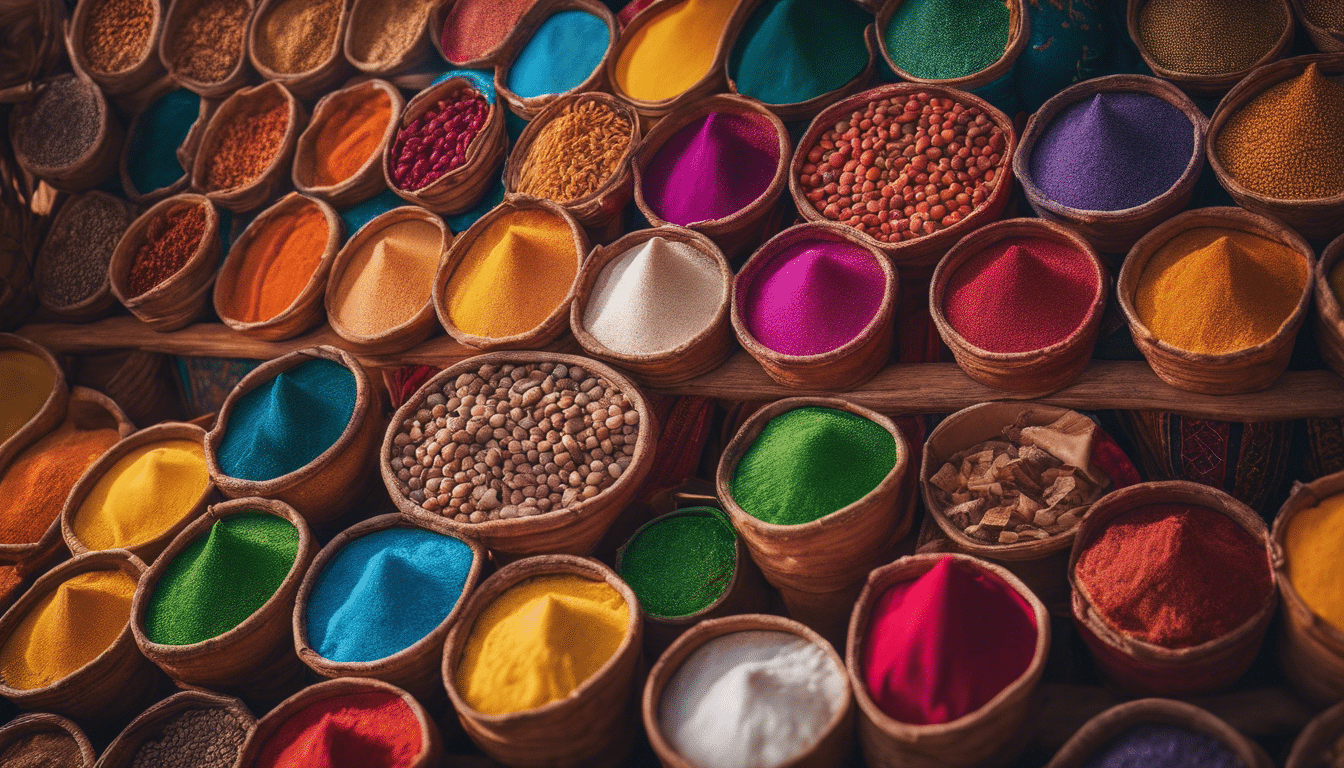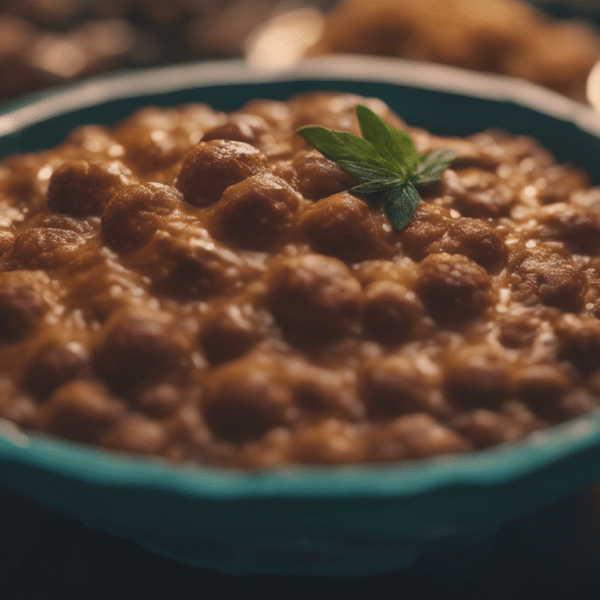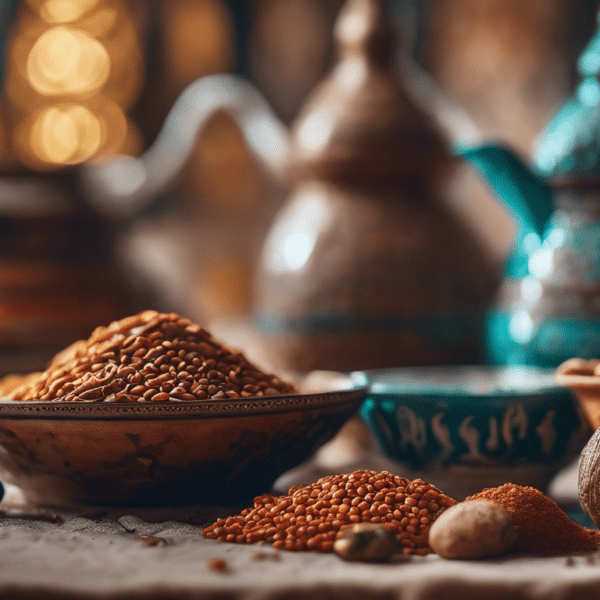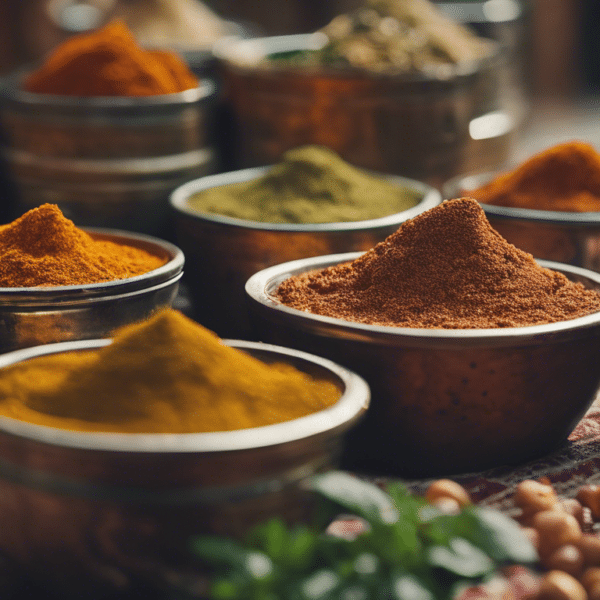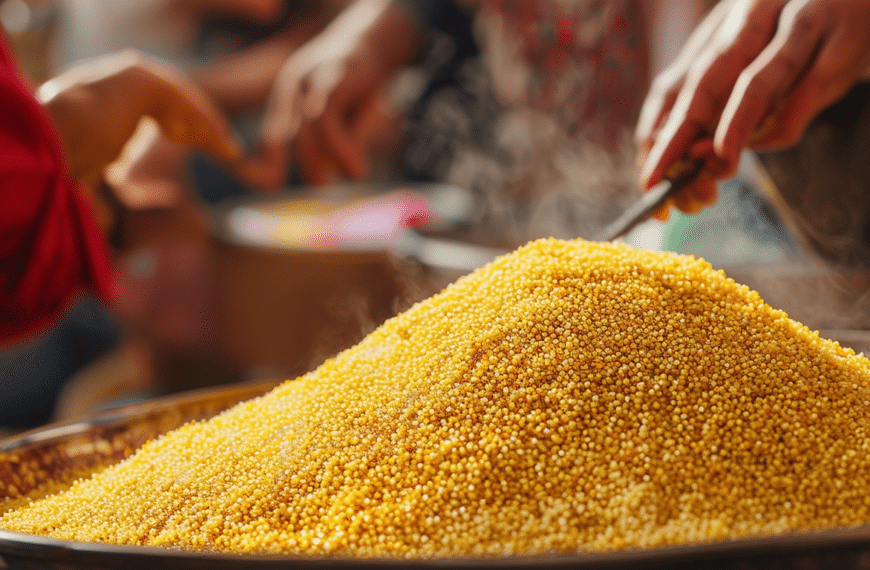Embark on a vibrant culinary adventure as we delve into the colorful world of Moroccan Zaalouk! Prepare your palate for a symphony of flavors and a mosaic of ingredients, from the classic smoky eggplant melody to the zesty twist of spicy tomatoes and the harmonic blend of sweet bell peppers. This traditional dish is a testament to Morocco’s rich culinary landscape, inviting you to savor each varied rendition. Step into our aromatic kitchen, where tradition meets creativity, and discover the countless shades of Zaalouk that can elevate the simplest of meals to an exotic feast. Let’s whisk away the mundane and indulge in the art of Moroccan Zaalouk – a festival of flavors waiting to dance on your taste buds!
Introduction to Moroccan Zaalouk

The Majestic Melange of Spices and Eggplant: A Dive into Zaalouk
In the panorama of Moroccan gastronomy, where vibrant spices dance alongside fresh produce, Zaalouk stands out as a beloved staple, a culinary ode to simplicity and flavor. This sumptuous dish beckons with its hearty embrace, promising a sensory journey through the tantalizing alleys of Moroccan cuisine. But what is this enchanting creation, and how can you bring its magic onto your own plate?
Unveiling the Essence of Zaalouk
Zaalouk, a creation born from the aromatic kitchens of the Maghreb, is both a delicacy and a testament to the resourcefulness of Moroccan cooks. At its core, Zaalouk is a smoky, savory spread made predominantly from eggplants, ripe tomatoes, and an alchemy of spices that elevate it from mere dip to a symphony of flavors. Traditionally served alongside crusty bread, it can grace your table as an appetizer, a side dish, or even a unique spread in sandwiches or on toast.
A Tale of Eggplants and Aromatics: Crafting Your Zaalouk
The journey of crafting Zaalouk begins with the roasting or grilling of eggplants, which when peeled, imparts a smoky depth to the ensemble. Coupled with tomatoes cooked down to sublime softness, the foundation of this dish is laid. The heart of Zaalouk’s identity, however, lies in its spices. Cumin, paprika, and garlic feature dominantly, each lending its robust persona to the mix, while fresh coriander and lemon juice cut through with verdant freshness and bright zing.
Textural Delight: Achieving Ideal Consistency
Attaining the perfect consistency in Zaalouk is a matter of taste. Some prefer a chunkier texture, allowing the individual components to assert themselves boldly. Others aim for a smoother, more homogenized blend, where eggplant and tomato coalesce into an unctuous, dip-like quality. Regardless of preference, the key is the mashing at the final stages of cooking, where the consistency is refined, and flavors are given the chance to marry fully. A generous drizzle of olive oil at the end luxuriously ties all the elements together.
Personalizing Your Zaalouk: Varying Flavors and Ingredients
While the traditional Zaalouk is a celebration of its key ingredients, there is room for personal touches. Some add a fiery kick with a sprinkling of chili flakes, or a touch of sweetness with a dash of sugar to balance the tomatoes’ acidity. Others may fold in roasted peppers or sprinkle tangy feta cheese on top for a Greek twist. The beauty of Zaalouk lies in its versatility, accommodating your palate’s desire.
Serving Suggestions to Enthrall Your Taste Buds
- As a Staple: Serve with warm, fluffy bread or crispy flatbreads.
- As a Partner: Complement grilled meats or fish, offering a refreshing counterpoint.
- As a Hero: Use as a flavorful spread in wraps and sandwiches.
- As a Twist: Top with crunchy nuts or seeds for added texture.
Succumbing to the charm of Zaalouk is not just about partaking in a dish; it is immersing oneself in the heart of Moroccan conviviality and creativity. As you embark on your Zaalouk adventure, remember that each variation you try, each flavor you choose to enhance, is a new page in your own culinary story under the Moroccan sun.
The Origins of Zaalouk in Moroccan Cuisine
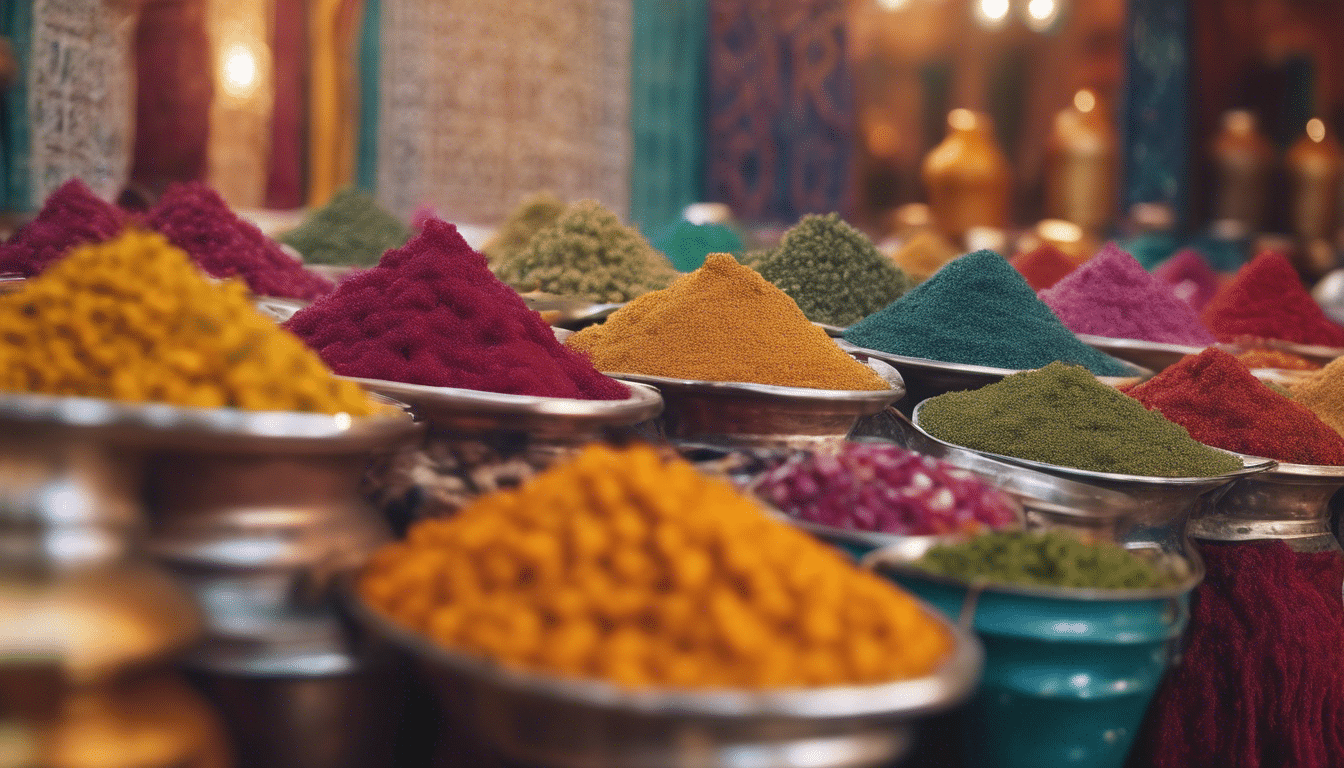
Zaalouk Recipes: The Origins of Zaalouk in Moroccan Cuisine
Embark on a voyage through time and taste, tracing the roots of a humble yet captivating staple that is as rich in history as it is in flavor: the Moroccan Zaalouk. This traditional dish, with its symphony of smoky eggplant and bold spices, holds a cherished place in the vast tapestry of Moroccan gastronomy.
In the Beginning: Zaalouk’s Heritage
Understanding Zaalouk begins by appreciating the tapestry of cultural influences that entwine to form Moroccan cuisine. With a lineage dating back to the indigenous Berbers, the flavorsome profiles of Arab conquests, and the tantalizing whispers of Mediterranean trade winds, Zaalouk is a culinary mosaic. At its core, Zaalouk is a celebration of the aubergine, a vegetable that found its way into Moroccan hearts and kitchen gardens with the Arab and Spanish civilizations. The dish’s name itself, derived from the Arabic “za’look,” hints at its Arab-Andalusian descent, while simultaneously adopting the local Berber penchant for earthy, hearty fare.
The Art of Crafting Zaalouk
At its essence, Zaalouk is a dish of simplicity, yet requires an artful touch. Central to its creation is the eggplant, which is first roasted or grilled over an open flame to imbue it with an unmistakable smoky aroma—a love letter to the traditional Moroccan outdoor cooking. Alongside the eggplant, ripe tomatoes, fresh garlic, and an array of enchanting spices such as cumin, paprika, and sometimes a flicker of chili, all converge in a fragrant dance. The produce is then masterfully blended, often with a generous pour of olive oil and a tangy twist of lemon juice, to create a spread that is as delightful to the palate as it is versatile.
Zaalouk Through the Ages
Historically, Zaalouk has been a testament to the resilience and adaptability of Moroccan cuisine. Its versatility gleams under the bright Moroccan sun, as it can be served warm or chilled, as a delectable appetizer or a luscious side dish. Over the centuries, this captivating concoction found its way to Moroccan feasts and fasts alike, adapting to the rhythms of religious rituals like Ramadan and often gracing the tables during the breaking of fast with its comforting embrace.
The Zaalouk of Today
In modern times, Zaalouk remains a cherished delight across Morocco and is greeted with the same enthusiasm as it would have been centuries ago. The secret to its continued adoration lies in both its rich heritage and its seamless integration into the contemporary food landscape. Today’s gourmands often take creative liberties with the classic recipe, adding personal touches that mirror their culinary journey, such as slivers of preserved lemon, a sprinkle of fresh herbs, or a cascade of crumbled feta for a Greco-Moroccan twist.
Any search for authentic Moroccan Zaalouk recipes will yield results as varied as the regions of Morocco itself. Each recipe is a story, each kitchen an altar to the honored, smoke-kissed eggplant. But no matter the interpretation, the essence of Zaalouk—a blend of history, culture, and the enduring warmth of Moroccan hospitality—remains steadfast, just like the Atlas Mountains that peer silently over the sprawling tapestry of this ancient and ever-evolving land.
Here is a simple and traditional Zaalouk recipe to ignite the senses and transport you to the bustling souks and tranquil riads of Morocco:
- Roast or grill whole eggplants until the skin is charred and the inside is soft.
- Peel the eggplants and crush the flesh to create a soft, smoky pulp.
- Sauté minced garlic and spices in olive oil until fragrant.
- Add finely diced tomatoes and simmer until they meld into a rich, chunky sauce.
- Mix in the eggplant pulp, and stir well, cooking together for several minutes.
- Season with salt, pepper, and a drizzle of olive oil, finishing with a splash of fresh lemon juice to taste.
- Garnish with fresh cilantro or parsley, and serve with warm bread for dipping.
Dive into the beauty of Moroccan cuisine; start with Zaalouk, and let your culinary adventure unfold.
Classic Ingredients of Traditional Zaalouk
Unveiling the Mystique of Zaalouk: Dive into Authenticity
Whispers of smoke from sizzling skillet meet the aromatic harmony of spices and herbs to birth a dish that epitomizes Moroccan soul food at its finest. Zaalouk, the quintessential Moroccan eggplant and tomato salad, invites a blend of earthy flavors and velvety texture to dance upon your palate. Deriving its essence from the humble eggplant, this dish promises an escapade into Moroccan culinary traditions that have been savored through generations.
The Edifice of Flavors: Key Ingredients Unlocked
The core of Zaalouk’s simplicity lies within its key ingredients. A dish celebrated for its vivid robustness, it entails:
- Plump, purple eggplants as its foundation
- Ripe tomatoes, bursting with juice and sweetness
- Aromatic garlic cloves, the silent champions of flavor
- Olive oil, liquid gold that unites and enhances
- Cumin, a gentle whisper of earthiness
- Paprika and chili flakes to sizzle the senses
- Crisp fresh coriander and parsley, reminiscent of Moroccan greenery
- And the essential salt and pepper, elevating the feast
Shall we begin weaving this tapestry of taste?
Simmering the Soul of Zaalouk: The Artistic Process
To bring this authentic Zaalouk recipe to life, one must indulge in the culinary ballet of roasting, blending, and simmering.
The journey commences with the eggplant, known in Morocco as the vessel of the earth’s cooling whispers. It must be roasted to perfection, allowing the skin to char lightly, and the flesh to succumb to a buttery tenderness. Once the eggplants are acquiescent, they are peeled to reveal their smokey flesh, ready for the next act.
Meanwhile, tomatoes, the rubies of the garden, are mingled alongside the fragrant, piquant garlic, and simmered down to a thick, rustic sauce. A generous drizzle of olive oil awakens the colors and enriches the melodies of flavors that are about to unfold.
Then, a delicate sprinkle of cumin and paprika pirouettes into the mixture, with chili flakes tiptoeing after, inviting warmth and a soulful spice to the symphony. The ensemble of ingredients coalesces, serenaded by gentle stirs, to ensure each note of flavor finds its place within the concoction.
As the amalgamation tenderly bubbles, we fold in the roasted eggplant, marrying it into the tomato base with a loving, meticulous mash. It’s a dance of combining textures: the tomato sauce’s richness cut through by the comforting, creamy eggplant.
Anointed with the bright, herby chiffonade of coriander and parsley, we watch as the green hues blend seamlessly into the warm, inviting mix. A final taste test, a pinch of salt and pepper to adjust, and the Zaalouk is ready to enchant.
The Finale: Serving the Zaalouk Sonata
The crescendo has peaked, and the Zaalouk is a masterpiece ready for the table. Serve it forth as a side dish or as a main attraction with freshly baked bread, but always amidst good company and eager anticipation.
This dish, rich in heritage, spiced with tradition, and bursting with flavors, will be a culinary experience wherein every morsel tells the story of a spirited Morocco. Embrace the journey into this gastronomic delight and savor, for within it lies the secrets of Moroccan kitchens, the whispers of the bazaars, and the soul of a vibrant culture. Bon appétit!

